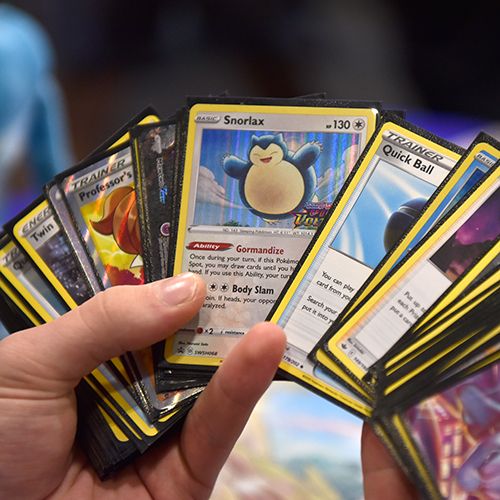The National was a sight to see.
One dealer's table was completely bought out. Another dealer arrived in Chicago with five cases of cards and was down to a half of a case by Sunday morning.
“I can’t believe it,” one of them told cllct. “Our stuff wasn’t even that good. Whatever we put out was pretty much bought.”
On Tuesday, my colleague Will Stern wrote a column about the hobby's bull market, a trend he wasn’t questioning.
And as someone 20 years Mr. Stern’s senior, let me just say this, I am plenty skeptical.
No, check that, I’m actually scared.
Because I love this hobby so much and want people to hang around when it gets pummeled, and it’s about to get decimated.
It has every mark of a classic bubble:
- Irrational price increases
- Lack of fundamentals
- Huge speculative buying
- Massive hype
People frequently look to the top for bubbles. But the top of the current collectibles market actually might make sense. At least for now, there are people who have more wealth, whether it's in the stock market or bitcoin highs.
I’m not scared about the top. I think the real one-of-one stuff could go up forever.
What scares me is the bottom — call it the $100 to $1,000 cards.
Let's start with Pokémon, which combined with other TCG cards, now makes up the majority of grading submissions to the major authenticators.

Card Ladder’s Pokémon Index, which tracks nearly 8,600 cards, is up 42% over the last six months and 52% over the last year. Cards with high-population counts, including the viral Pikachu with Grey Felt Hat card, continue to defy logic. That card, which has a PSA 10 population of more than 41,000, has skyrocketed from a low of about $195 to a high of $1,150. Recent sales are hovering around $1,000.
The sealed wax market for Pokémon cards also seems unsustainable. Flippers continuously fight with other collectors over drops, and it’s only a matter of time before that community gives up the battle. We saw the fight over sports cards during the COVID-19 pandemic, and the market eventually corrected.
But it actually goes deeper than that.
In 1999, my senior year at Northwestern, I read “Devil Take the Hindmost: A History of Financial Speculation,” by the brilliant economic historian Edward Chancellor.
Chancellor noted, with decades of examples, that bubbles often were created when an asset took on a new use case. Right before a bubble popped, there was irrational movement at the bottom.
That included the South Sea Bubble of 1720. The South Sea Company got the rights to trading in South America in exchange for taking on some of England’s debt.
Eventually, it had nothing to do with those rights. Instead, because the government backed the company’s stock with the promise of returns, those who had shares could get loans using the stock as collateral.
Pretty soon, other imitators were out using the same structure, which of course, collapsed.
So, what does this have to do with the hobby?
On Sunday, about 50 lower-end cards (valued around $100 to $2,000) broke their public records on Fanatics Collect. On eBay, a Jay Cutler card sold for $12,107, an all-time record and the very personification of froth.
If Chancellor saw how these lower-end cards had shifted in their use cases and had seen how they had been boosted in value, he would have had another chapter in his fabulous book.
You see, the cards themselves actually don’t matter anymore. Only the value ascribed to them matters. Whether it’s a 2024 Shai Gilgeous-Alexander card or a 1986 Charles Barkley, it doesn’t matter.
If they are the same value, they mean the same as vehicles in a game.
RELATED STORIES:
- The new hobby bull market is real ... and it's spectacular
- Hobby stays hot: Record $308 million spent online on cards in July
- The National reports record attendance for third straight year
- Fanatics Fest organizers happy with results, confirm return in 2026
These lower-end cards, including Pokémon cards, can now be propped up in value by the important roles they play in the repack business, where third-party vendors often pay 80% or more of current comps to fill a new mystery pack product.
Some people are collecting Gilgeous-Alexander and Barkley because they care about the card or the player. But the repack business, which should do $1 billion in retail sales in 2025, is more worried about the dollars assigned to the card.
It’s hard to argue repacks are driving up prices, but there’s plenty of reason to believe the business could be propping up cards that might have gone down in price otherwise. The liquidity this causes certainly has value, but that liquidity might just be artificial, and the stability it offers will surely end at some point.
The collector is now like the owner of the South Sea Company stock. Collectors are investing for the rights. The repack business is the group that is benefiting on the delta between the stock and its worth in its value to create its game.
When collectors realize their cards have merely become commodities for the repack game and only hold their value as a number for repackers, instead of valuing it by the person on the cardboard, this market will implode.
I hope I am wrong, but having re-read Chancellor’s examples over the last week, it’s looking like the arrow is already in the air heading for the bullseye.
Darren Rovell is the founder of cllct and one of the country's leading reporters on the collectibles market. He previously worked for ESPN, CNBC and The Action Network.

